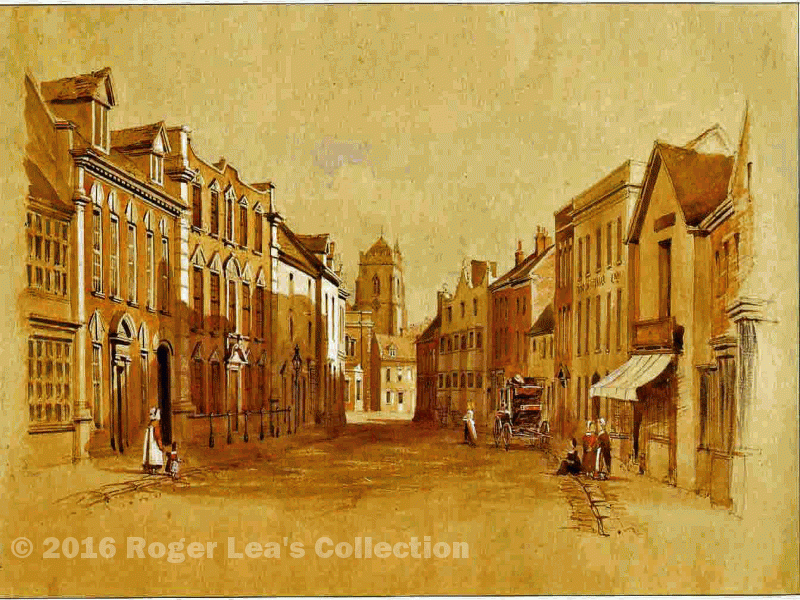In the middle of the nineteenth century, when this picture was painted, some of the houses in High Street were still occupied by gentry families. To the left, the two-storey house with dormer windows and an archway is no. 38, and the three-storey house next to it is no. 36. Both of these houses were originally built of stone, but they were given new façades early in the eighteenth century. No. 38 belonged to Samuel Stevenson, and was given a smart Georgian make-over, while no. 36, which belonged to the Sacheverell family of New Hall, was refronted in a more ponderous and extravagant style.
Samuel Stevenson had settled in Sutton on his marriage to Mary Mott in 1664. He was a puritan who had his house licensed for “Presbyterian worship” in 1672. His high standing is shown by his appointment as High Sheriff of Warwickshire for the year 1697, and his wealth by the extensive properties bequeathed in his will - he died in 1709. Ann Sacheverell regarded herself as a cut above her neighbour Stevenson; she was born Ann Devereux of Sheldon, and was the widow of Valence Sacheverell of New Hall. When she died in 1688 she was found to have had £2,000 in cash in her room - over a million pounds in today’s money.
In January 1666 the dunghill at no.36 was overflowing into the yard of no. 38, and Stevenson decided to put his complaint to Mrs. Sacheverell in writing. She replied by letter in very condescending terms, as befitted her higher rank, concluding “I am sure my former civility to you and yours - though now you’re so captious - has merited better terms to me.” This reply incensed the puritan Stevenson, who wrote another letter full of his grievances - her horses had broken his fence, her pigs had got into the garden and eaten all his plants, and even into the house- and he accuses her of promising to make repairs but doing nothing. His letter ends with an underlined sentence “I neither have, nor will, be outdone by you.”

Sacheverall-Stevenson Everitt view c.1850 22.viii.08